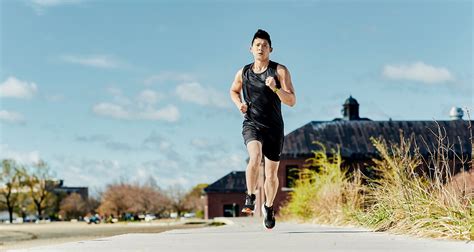The Foundation of Injury-Free Running
For daily runners, the right pair of shoes isn’t just about comfort; it’s a critical tool in preventing the common aches, pains, and more serious injuries that can sideline training. While no shoe can guarantee complete immunity from injury, certain features are specifically engineered to mitigate risks by addressing biomechanical stresses and providing essential support. Understanding these elements can significantly impact your running longevity and overall foot health.
Cushioning: Absorbing Impact
One of the most immediate benefits of a well-designed running shoe is its cushioning system. Modern shoes utilize advanced foams and gel technologies (e.g., EVA, TPU, specialized proprietary foams) to absorb impact forces generated with each stride. Adequate cushioning reduces stress on joints like knees, hips, and ankles, particularly important for runners accumulating high mileage or those training on hard surfaces. However, it’s a balance; too much cushioning can sometimes reduce ground feel and stability, so finding the right level for your body and running style is key.

Stability and Support: Guiding Your Stride
Many common running injuries, such as shin splints, plantar fasciitis, and runner’s knee, are often linked to overpronation – the excessive inward rolling of the foot after landing. Stability shoes are designed to counteract this by incorporating features like medial posts (firmer foam on the inside of the midsole), guide rails, or other structural elements that gently prevent the foot from rolling too far inward. For runners with neutral pronation, a neutral shoe offering balanced cushioning is usually sufficient, but those with pronation issues will benefit greatly from the targeted support of a stability shoe. Getting a gait analysis at a specialized running store can help determine your pronation type.

Proper Fit and Toe Box: Avoiding Aches
An ill-fitting shoe is a recipe for disaster. The shoe should fit snugly in the heel, comfortably over the midfoot, and provide ample room in the toe box. A common mistake is buying shoes that are too small, leading to black toenails, blisters, and bunions. Your toes should be able to splay naturally, and there should be about a thumb’s width of space between your longest toe and the end of the shoe. A wide toe box allows for natural toe splay, enhancing stability and reducing the likelihood of forefoot issues.

Outsole Grip and Flexibility: Traction and Natural Movement
The outsole, the bottom layer of the shoe, plays a crucial role in traction and ground contact. Different rubber compounds and lug patterns are designed for various terrains – road, trail, or mixed. A good outsole provides reliable grip, preventing slips and falls that can lead to acute injuries. Furthermore, appropriate flexibility in the forefoot allows for a natural toe-off, promoting efficient biomechanics. Shoes that are too stiff can restrict natural foot movement, while those that are too flexible might not offer enough support.

Heel Drop and Midsole Geometry: Enhancing Biomechanics
Heel drop, or offset, refers to the difference in height between the heel and the forefoot of the shoe. Traditional running shoes often have a higher heel drop (8-12mm), which can favor heel strikers and reduce strain on the Achilles tendon and calves. Lower drop or zero-drop shoes encourage a more midfoot or forefoot strike, potentially strengthening foot and calf muscles but requiring an adaptation period. The overall midsole geometry, including rocker designs, can also guide the foot through its gait cycle more smoothly, reducing the work required by certain muscle groups and potentially preventing overuse injuries.

Beyond the Shoe: Gait Analysis and Rotation
While shoe features are vital, understanding your personal biomechanics through a professional gait analysis is the best way to choose the right pair. Additionally, rotating between two or more pairs of running shoes can extend their lifespan and allow different shoe features to address various needs or provide slightly different stresses, further minimizing injury risk.
Conclusion: Investing in Your Foot Health
Selecting running shoes with appropriate cushioning, stability, a proper fit, reliable outsole grip, and suitable heel drop are all instrumental steps in preventing common injuries during daily training. Don’t underestimate the power of well-engineered footwear; it’s an investment in your running journey and long-term health, allowing you to hit the pavement or trails consistently and comfortably.




